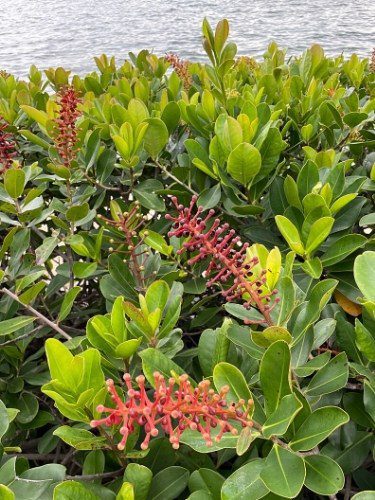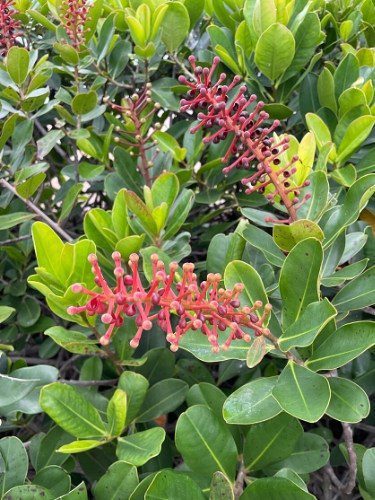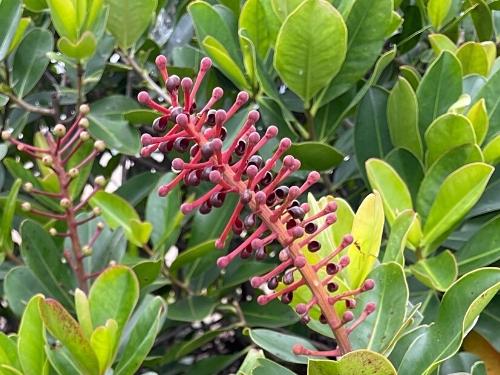Norantea (Norantea brasiliensis) is an ornamental shrub or climbing vine that stands out for its unique inflorescence, resembling a brush. Native to the coastal sand dunes of Rio de Janeiro and Espírito Santo (Brazil), this plant has been listed in the Official List of Endangered Flora Species in the city of Rio de Janeiro and is protected by Municipal Decree 15.793, dated June 4, 1997. It typically grows in coastal and riverine forests, as well as in marshy areas. Its stems are branched, initially erect and becoming scandent as they grow. As a result, it can appear as a shrub, climbing vine, or even a small tree, capable of reaching a height of 8 meters (26.2 feet). The leaves are simple, oval-shaped, glossy, leathery, with prominent veins, reddish when young, and green when mature. There is a variegated variety, marbled with white, still rare in cultivation.

It blooms almost year-round, but mainly between spring and autumn. Its inflorescences are terminal, in the form of racemes, resembling the bristles of a hairbrush. They are showy and gather numerous flowers arranged spirally, gradually transitioning from yellow to red as time passes, with extrafloral nectaries in the shape of pockets.
The flowers are tubular, hermaphroditic, protandrous, and self-compatible. Producing abundant nectar, they attract different species of birds, including hummingbirds and warblers, which act as pollinators. The fruits develop in summer, small, globular, dehiscent, and wine-colored when ripe. The seeds are semi-lunar in shape, with varying viability, and spontaneously germinate around the parent plant.
It’s an ideal shrub for those looking to have a unique and sophisticated garden, as its use is quite uncommon. The gradation of colors, transitioning from yellow to red, brings an interesting array of warm tones to the design. Simultaneously, its use contributes to the national flora, ensuring the perpetuation of the endangered species. Thus, Norantea is suitable for different garden styles, an excellent choice for coastal landscaping due to its origin in sandy areas.
It’s a versatile plant for the garden, serving as a standalone shrub, small tree, and even for green roofs, slopes, combinations with other plants, or flowerbeds, creating captivating masses. It can also be supported on trellises or walls, as it can be trained as a climbing vine using adventitious roots. Perfect for terraces, patios, balconies, and exposed decks, where it can be used in pots and planters.

Remember to cultivate it in sunny areas or those receiving direct sunlight for at least 6 hours a day. It’s an easy-to-grow species with straightforward maintenance involving pruning for cleaning and fertilization. Notably, for shrub cultivation, formative pruning should be performed to promote density. As a bonus, the whimsical shape of the inflorescence, resembling a brush, can attract children’s interest.
Cultivate it under full sun, in sandy, well-draining soils rich in organic matter. If planted in pots, keep the soil moist, avoiding complete drying between waterings. In the garden, once well-established, supplemental watering is ideal to overcome dry periods. Use mulch, such as pine bark, straw, or dry leaves, to maintain soil moisture and temperature. Norantea prefers warm and mild climates, not withstanding intense cold. However, it tolerates light frosts, salinity, and strong maritime winds. Fertilize monthly with organic and mineral NPK 10.10.10 fertilizers. It can be propagated by seeds as well as through air layering and tip layering.


